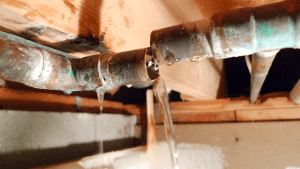Detecting Hidden Water Line Leaks: 6 Ingenious Methods
Detecting Hidden Water Line Leaks: 6 Ingenious Methods
Blog Article
Almost everyone has their unique assumption about Top leak detection hacks.

Early detection of dripping water lines can minimize a potential catastrophe. Some little water leakages might not be visible.
1. Take A Look At the Water Meter
Every house has a water meter. Inspecting it is a proven manner in which assists you find leaks. For beginners, turn off all the water sources. Guarantee no person will certainly purge, make use of the tap, shower, run the cleaning machine or dishwasher. From there, go to the meter and watch if it will change. Given that no one is using it, there need to be no motions. That shows a fast-moving leakage if it relocates. Likewise, if you spot no changes, wait a hr or 2 as well as inspect back again. This indicates you may have a sluggish leak that might even be underground.
2. Check Water Consumption
If you detect sudden adjustments, in spite of your usage being the same, it indicates that you have leakages in your plumbing system. A sudden spike in your bill shows a fast-moving leak.
At the same time, a steady increase monthly, despite having the exact same behaviors, reveals you have a slow leakage that's also gradually escalating. Call a plumber to extensively inspect your building, particularly if you really feel a cozy area on your flooring with piping underneath.
3. Do a Food Coloring Test
30% comes from bathrooms when it comes to water intake. Test to see if they are running effectively. Decline specks of food shade in the storage tank and wait 10 minutes. If the shade in some way infiltrates your dish during that time without flushing, there's a leakage in between the storage tank as well as bowl.
4. Asses Outside Lines
Don't fail to remember to examine your outdoor water lines as well. Must water seep out of the link, you have a loosened rubber gasket. One little leakage can waste loads of water and surge your water expense.
5. Assess the circumstance as well as inspect
House owners need to make it a routine to examine under the sink counters as well as even inside cupboards for any kind of bad odor or mold and mildew development. These two warnings show a leakage so timely attention is required. Doing regular examinations, also bi-annually, can conserve you from a major problem.
If you know your home is already old, maintain a careful eye on your heaters, pipes, pipelines etc. Look for stainings and also compromising as the majority of pipelines as well as home appliances have a life span. They will certainly likewise naturally degrade as a result of deterioration. If you suspect leaking water lines in your plumbing system, don't wait for it to rise. Call a professional plumber today so you don't wind up with a horrible mess in your house.
Early detection of dripping water lines can minimize a possible calamity. Some small water leaks might not be visible. Checking it is a guaranteed method that aids you discover leakages. One small leakage can waste tons of water and spike your water bill.
If you presume dripping water lines in your plumbing system, do not wait for it to intensify.
WARNING SIGNS OF WATER LEAKAGE BEHIND THE WALL
PERSISTENT MUSTY ODORS
As water slowly drips from a leaky pipe inside the wall, flooring and sheetrock stay damp and develop an odor similar to wet cardboard. It generates a musty smell that can help you find hidden leaks.
MOLD IN UNUSUAL AREAS
Mold usually grows in wet areas like kitchens, baths and laundry rooms. If you spot the stuff on walls or baseboards in other rooms of the house, it’s a good indicator of undetected water leaks.
STAINS THAT GROW
When mold thrives around a leaky pipe, it sometimes takes hold on the inside surface of the affected wall. A growing stain on otherwise clean sheetrock is often your sign of a hidden plumbing problem.
PEELING OR BUBBLING WALLPAPER / PAINT
This clue is easy to miss in rooms that don’t get much use. When you see wallpaper separating along seams or paint bubbling or flaking off the wall, blame sheetrock that stays wet because of an undetected leak.
BUCKLED CEILINGS AND STAINED FLOORS
If ceilings or floors in bathrooms, kitchens or laundry areas develop structural problems, don’t rule out constant damp inside the walls. Wet sheetrock can affect adjacent framing, flooring and ceilings.
https://www.servicemasterbyzaba.com/blog/how-to-detect-water-leakage-in-walls/

Do you appreciate reading about Leaking water lines? Place a short review below. We would be interested to listen to your responses about this article. We hope that you come back again before long. Those who enjoyed reading our blog entry if you please make sure you remember to share it. I recognize the value of reading our article about Detecting hidden plumbing leaks.
Call Us Today Report this page